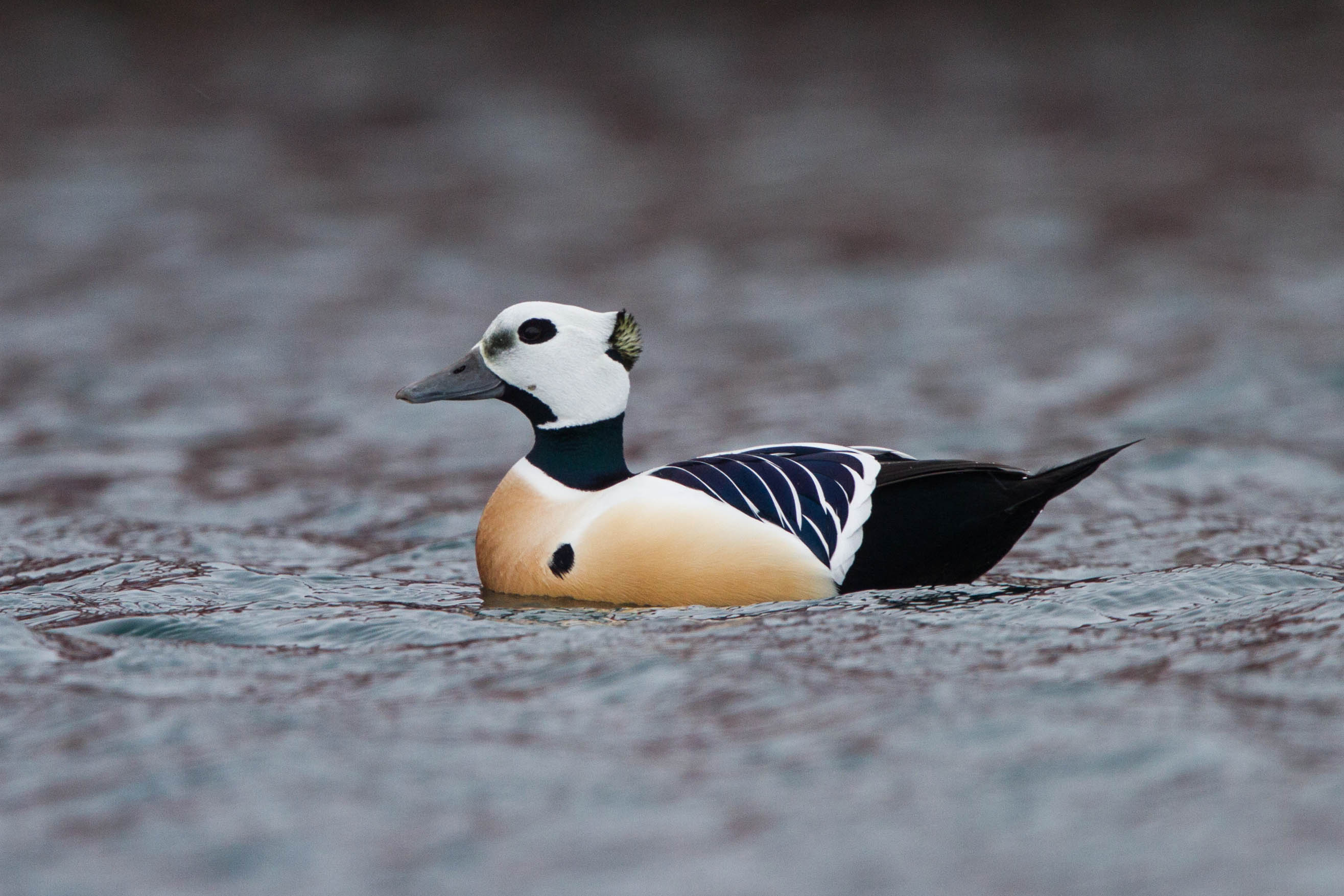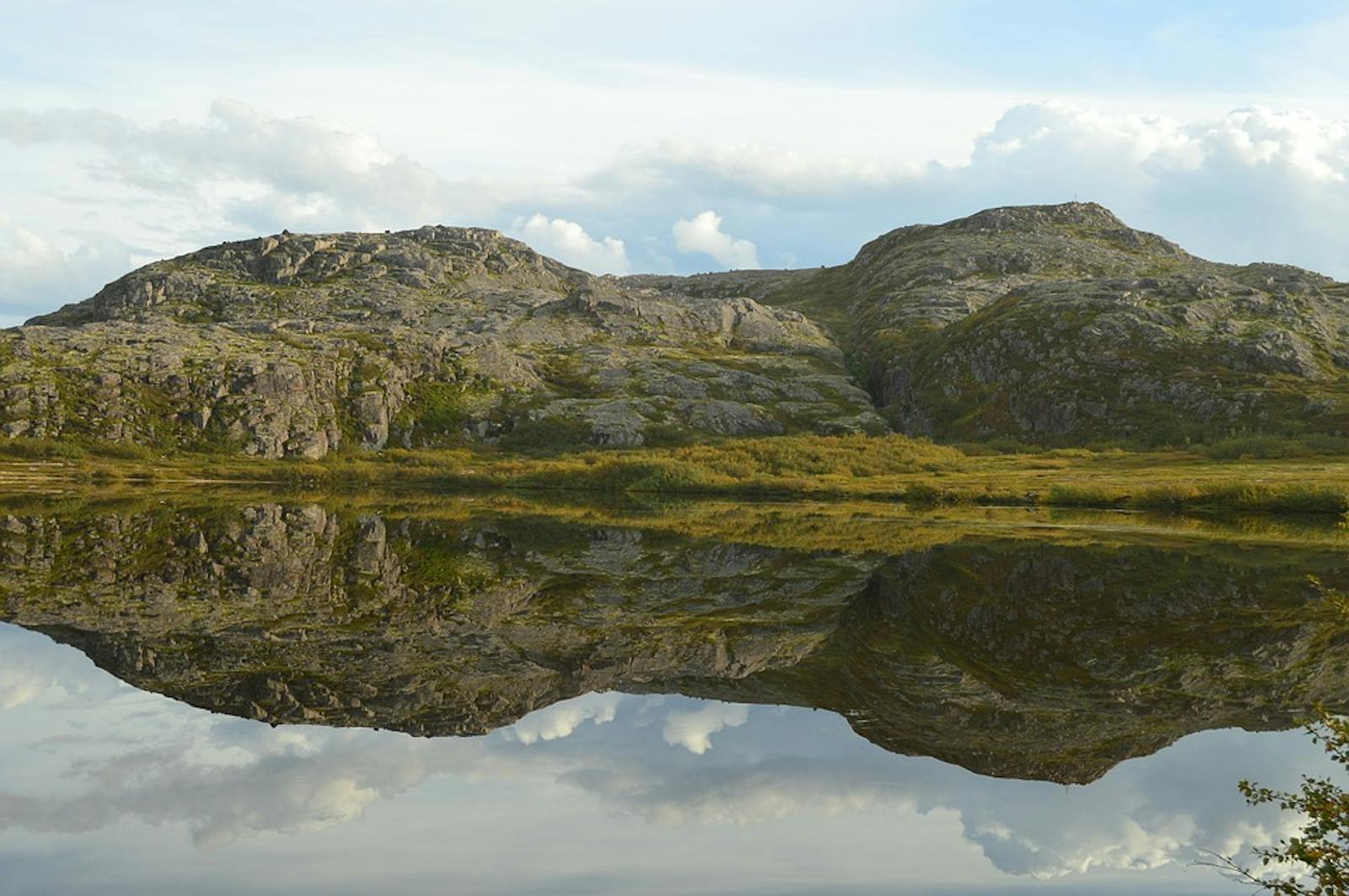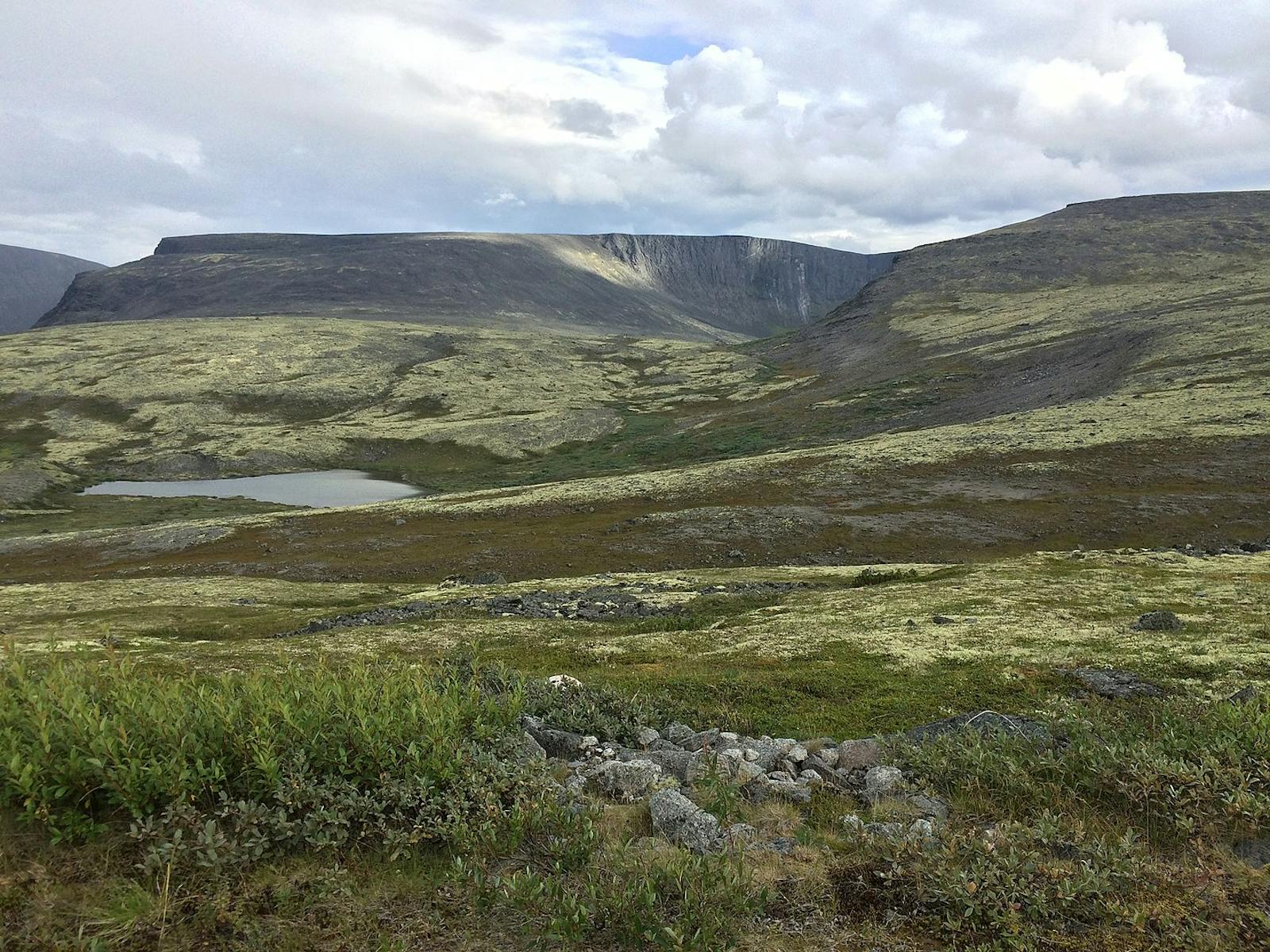Kola Peninsula Tundra
The ecoregion’s land area is provided in units of 1,000 hectares. The conservation target is the Global Safety Net (GSN1) area for the given ecoregion. The protection level indicates the percentage of the GSN goal that is currently protected on a scale of 0-10. N/A means data is not available at this time.
Bioregion: Greater Eurasian Tundra (PA4)
Realm: Subarctic Eurasia
Ecoregion Size (1000 ha):
5,890
Ecoregion ID:
774
Conservation Target:
55%
Protection Level:
1
States: Russia, Norway
Magnificent herds of reindeer wander windswept plains, navigating a myriad of mires, streams, and lakes. Winter snow frosts the landscape in a glistening white, whilst berries provide a riot of autumnal colour: cloudberry, blueberry, and lingonberry dapple the land with orange, blue, and red. The jewel of these lands is the illustrious Lake Seydozero, which is also called the Sacred Lake. Where the plateau meets the wild Barents Sea, sheer cliffs burgeoning with seabirds erupt in a cacophony of sound. Amongst these is Steller’s eider, a small black and white duck with a distinct burnt-orange belly; these colourings have endearingly made it known as ‘the bird that sat on the fire’.

The flagship species of the Kola Peninsula Tundra ecoregion is the Steller’s eider. Image credit: Creative Commons
This tundra stretches across the Northern shore of the Russian Federation’s Kola Peninsula, reaching into the northeasternmost tip of Norway. These are coastal lowlands: the plateau slopes gently Northward to meet the Barent’s Sea at a high, cliffed shore. A humid-continental climate prevails, with extremely cold winters, and short, cool summers.
Sparse woodlands of low, crooked birch are the only trees, with a forest floor of mountain crowberry, bilberry, and Swedish dwarf cornel. Where trees are absent, the tundra blooms with lichens, mosses, and dwarf shrubs: cowberry, black crowberry, alpine bearberry, and alpine azalea. The land glimmers with many rivers, streams, and lakes, and sphagnum bogs are widespread.
Endemism is low in this ecoregion. Lapland cinquefoil and Cotoneaster cinnabarinus are endemic plants, whilst the Norway lemming is a near-endemic animal and a crucial prey species. Arctic char ascend the rivers, whilst Arctic fox, Arctic hare, and wolverine roam the inland plateau. Coastal waters are graced by a richness of marine mammals, including white whale, blue whale, white-beaked dolphin, and gray seal, whilst tall coastal cliffs are home to around 50 species of seabird.
.jpg)
Arctic fox. Image credit: Creative Commons
Huge nesting colonies of black-legged kittiwakes and thin- and thick-billed murres number tens of thousands of pairs, and Arctic razorbills, great black-backed gull, mew gull, and Atlantic puffins also nest here in abundance. The Kola Peninsula is a key wintering ground for the elegant Steller’s eider, though it is increasingly endangered due to oil pollution and warming Arctic temperatures.
Most of the people in the ecoregion live in large communities along the coast, including the indigenous Saami, a people whose culture is based on domesticated reindeer herding. Natural resources were largely unexploited here until the last 200–300 years.ii In recent history, however, mining has become a principal branch of the economy, largely in the more mountainous South; the Kola peninsula has the world’s largest deposits of apatite, a substance used in fertilizer.
Additionally, adventurous tourism has expanded and intensified here, and the use of snowmobiles, mountain bikes, and dog sledges is popular.ii In the Russian Federation, protected areas include Murmansky Tundrovy Zakaznik and Sejdozero Zakaznik, the latter of which covers the hugely important Lake Seydozero. Norway’s Varangerhalvøya National Park flourishes with rare species such as field fleawort and Svalbard snow cinquefoil, and some of the northernmost deciduous woodlands in the world.

Atlantic puffin. Image credit: Creative Commons
The most prevalent environmental impact is pollution from the mining industry. Land in the vicinity of two major smelters, Pechenganickel and Severonickel complexe, exhibits damaging levels of sulfuric gases, nickel, and copper.ii In particular, emissions of sulfur dioxide cause acid rain across the region and the acidification of many lakes.
Furthermore, the exploitation of North Atlantic fish stocks for human consumption and industrial use is threatening marine mammals and bird populations with a lack of prey. There have been cooperative efforts between Norway and Russia to monitor air quality, establish dual stewardship of protected lands, and enforce mutual water protection measures for rivers. The two countries have also formed a host of working groups on pollution reduction, cultural heritage, and environmental contamination.
The priority conservation actions for the next decade will be to: 1) promote the relevant mining companies to establish a transparent plan to reduce sulfur dioxide emissions; 2) enforce sustainable fishing quotas under international agreements between circumpolar countries; and 3) invest in the monitoring of environmental contamination levels and the impact on biodiversity.
Citations
1. Hammar, J. (2002), The Subarctic Cap of Europe: The Fennoscandian Alpine, Tundra and Taiga Ecoregion. A Reconnaissance Study and Biodiversity Vision for a WWF Global 200 initiative in Norway, Sweden, Finland and Russia, Stockholm, Sweden
2. Kravtsova, V.I. and Loshkareva, A.R., 2013. Dynamics of vegetation in the tundra-taiga ecotone on the Kola Peninsula depending on climate fluctuations. Russian journal of ecology, 44(4), pp.303-311.
3. Bellona. Russia and Norway make progress on cross-border environmental problems. [Online]. [Accessed 23rd July 2019]. Available from: https://bellona.org/news/industrial-pollution/2017-10-russia-and-norway-make-progress-on-cross-border-environmental-problems


.png?auto=compress%2Cformat&w=300)

